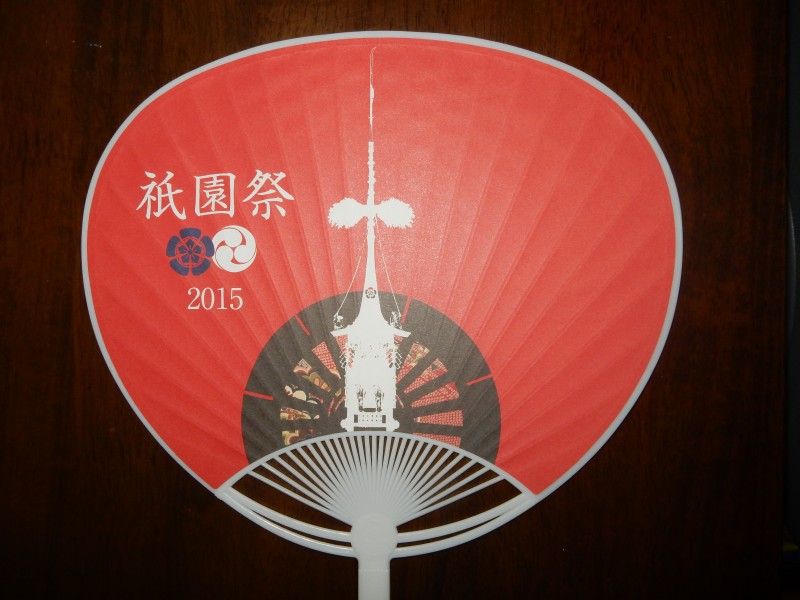
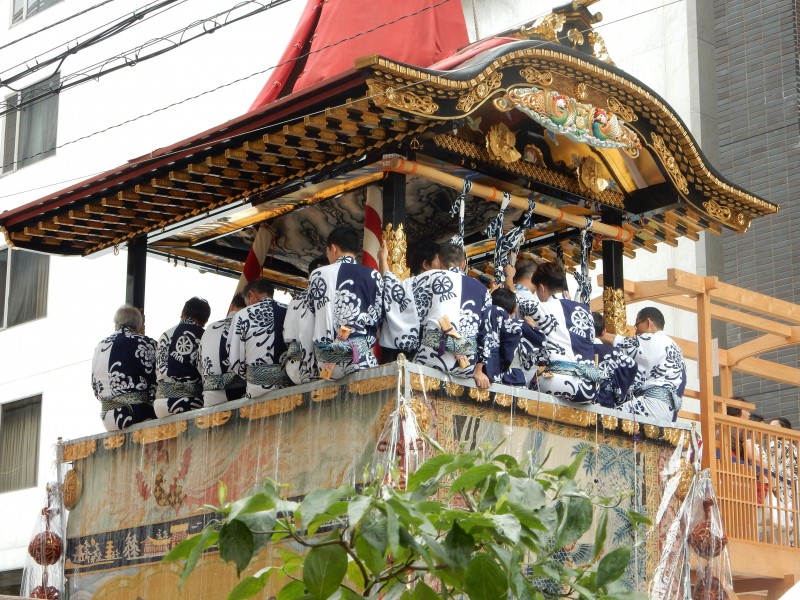
Musicians packed together on the Kikusui Float
The evenings before the grand parade on July 17 mark the busiest, bustling peak of the month-long Gion Festival, but this year a typhoon currently hitting Shikoku threatens to wreak devastation. At the time of writing it’s the evening of the 16th, and a fierce wind has set in bringing driving rain. Whether the main parade tomorrow morning will take place seems doubtful. [In fact, it did take place!]
In the happy hours before the typhoon, I managed to walk around the downtown area where the 33 floats (known as yamaboko) are set up. Many display their treasures and altars for public viewing, and some allow access onto the floats from the second-floor of the adjacent building.
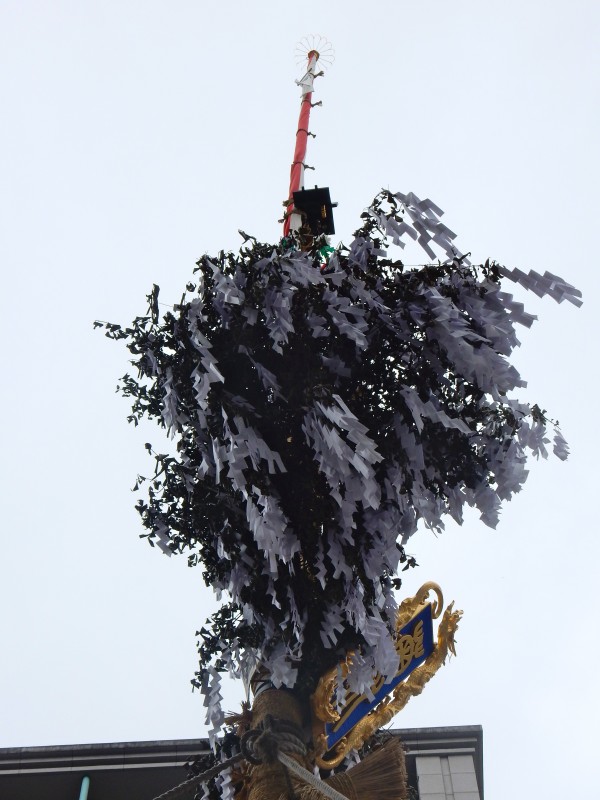
The top of hoko floats reach upwards towards heaven like lightning conductors
Each float has its own history, its own traditions, and its own neighbourhood support system. I like to concentrate on one particular float each year, and this year focussed my attention on the Kikusui (Chrysanthemum Water) float.
The original float burned down in 1864, then after an absence of 88 years the present float was built in 1952. It is one of nine huge hoko in the festival, which means it has an enormous tall pole, weighs about 12,000kg, and needs a team of some 30-40 to pull it, with two men piloting it round corners by slipping wet bamboo beneath the fixed wheels.
The Kikusui float took its name from a well in the neighbourhood, which was associated with a Chinese legend about a Chrysanthemum Boy. He was a favourite of the emperor, and forced into exile by jealous rivals at court. But in his new place of residence the boy was able to drink dew from the leaves of chrysanthemum flowers and so lived to be 700 years old. It’s for this reason the float has tapestries depicting scenes from the Chinese story.
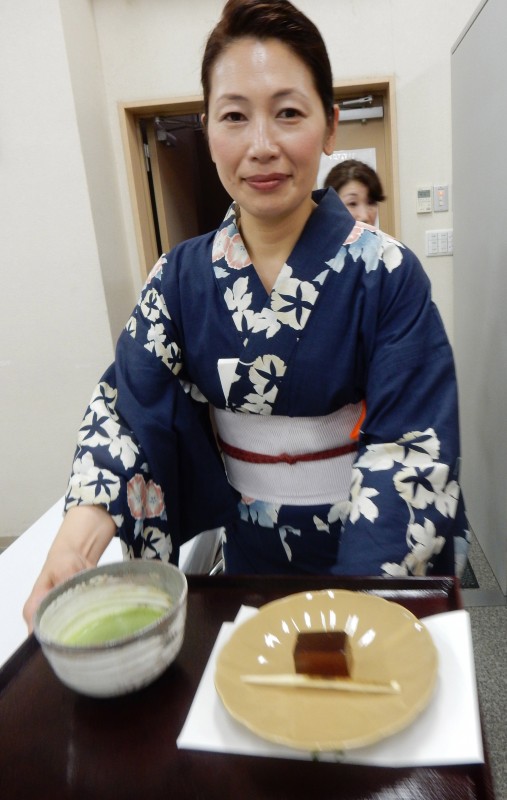
Tea is served! Not only that, but you get to keep the plate with its chrysanthemum design.
In one of the adjacent buildings a set of green tea and Japanese cake was served, in front of an altar with a doll representing the Chrysanthemum Boy of ancient China. The doll is a substitute for a chigo (page boy), into whom the kami would once have descended (one can easily imagine a spirit descending down the long pole and into the human vessel).
Before the main parade on July 17, the doll is moved from the altar and onto the float. I was told that it is manipulated so as to move in the same Noh-like manner as the human chigo in the grand parade’s leading float. It’s as if both are unconsciously moved by an animating spirit.
Each of the floats in the Gion Festival produces its own chimaki amulet. These distinctive charms are hung on entrances for good fortune, especially businesses (the festival was run by city merchants in the past). Those who buy the Kakusui amulet are allowed access onto the float, where one can see for oneself the small size into which the musicians are squeezed. Because of the Chinese legend, the Kikusui charm is said to promote longevity in addition to good business – so if you’d like a long prosperous life, try heading next time for this fascinating float!
******************
For the first of a 10-part series on the Gion Festival, click here.
For an overview of the modern Gion Matsuri, click here. For a brief report and pictures of the evening before the parade, known as yoiyama, click here. To learn about the spiritual side of the festival, click here. For a talk about the shamanic elements, click here.
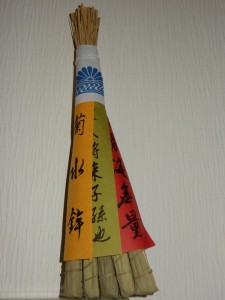
The Kikusui Float charm, designed not only to bring success in business but to ensure a long life
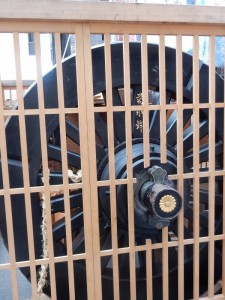
The wheels on the float are fixed and so can’t turn corners, necessitating complicated manoeuvres
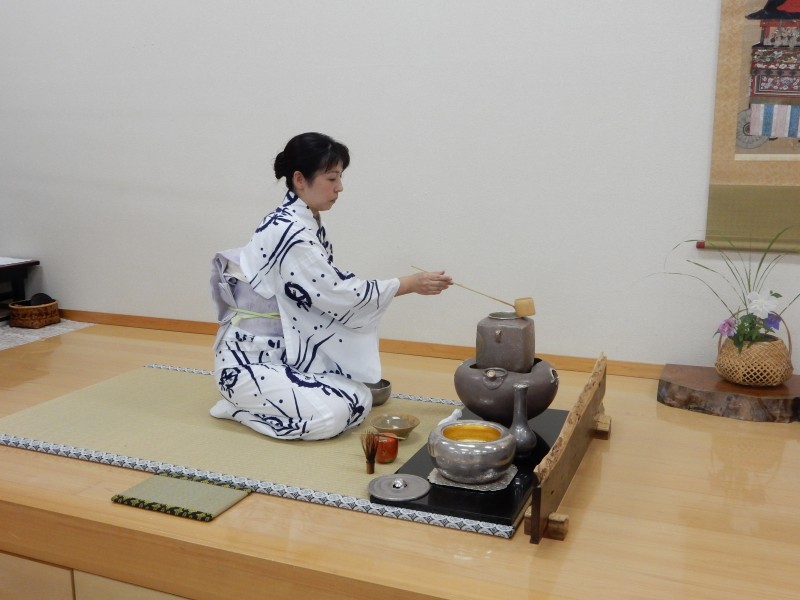
Tea is served with Japanese elegance
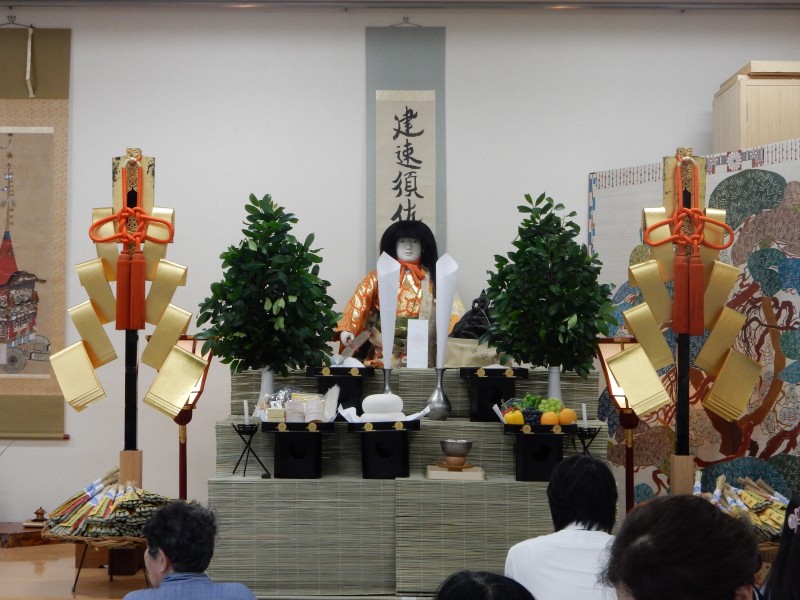
Tea is drunk in front of the altar with the Chrysanthemum Boy doll
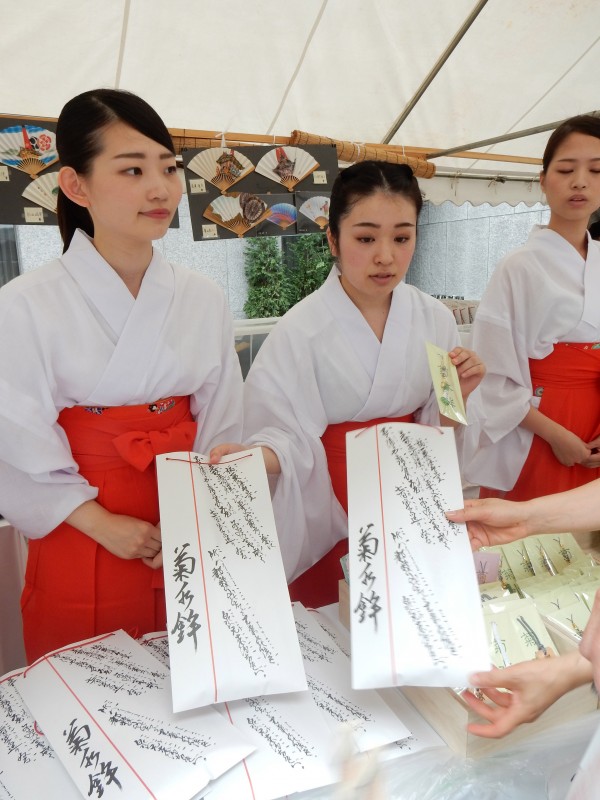
The sales girls do a brisk trade of amulets and other festival goods
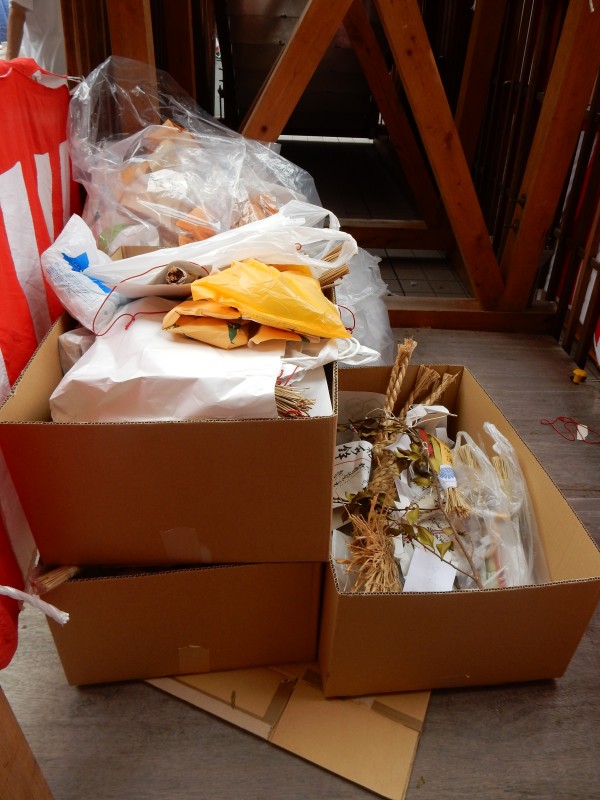
Last year’s charms are discarded, to be ritually burnt
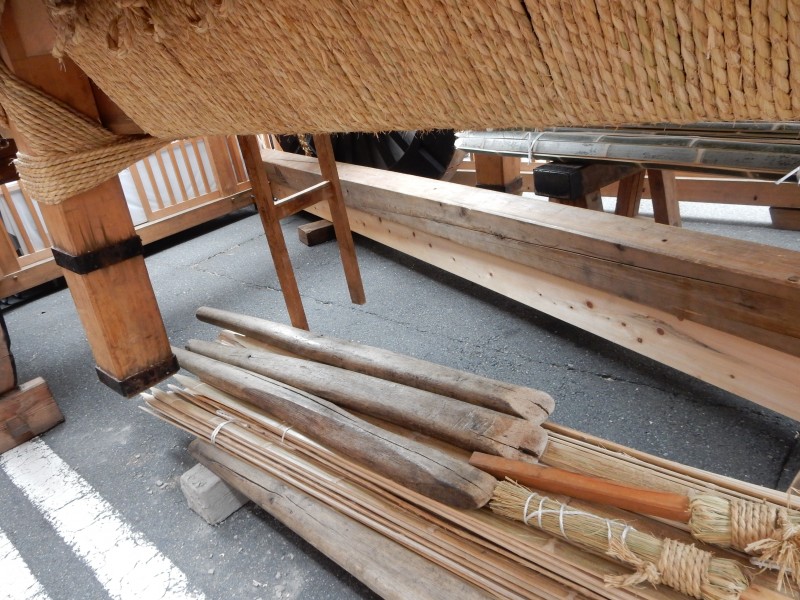
Beneath the float can be seen bamboo strips that will be placed beneath the wheels during the parade in order to help navigate corners. Notice the aesthetic quality of the rope binding the wooden parts of the float (no nails are used).
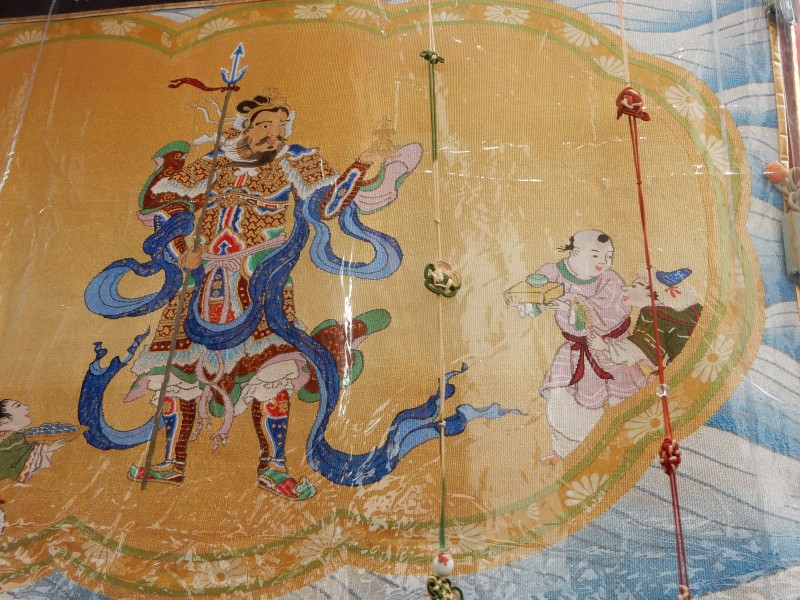
Scenes from the Chinese legend of the Chrysanthemum Boy adorn the sides of the float
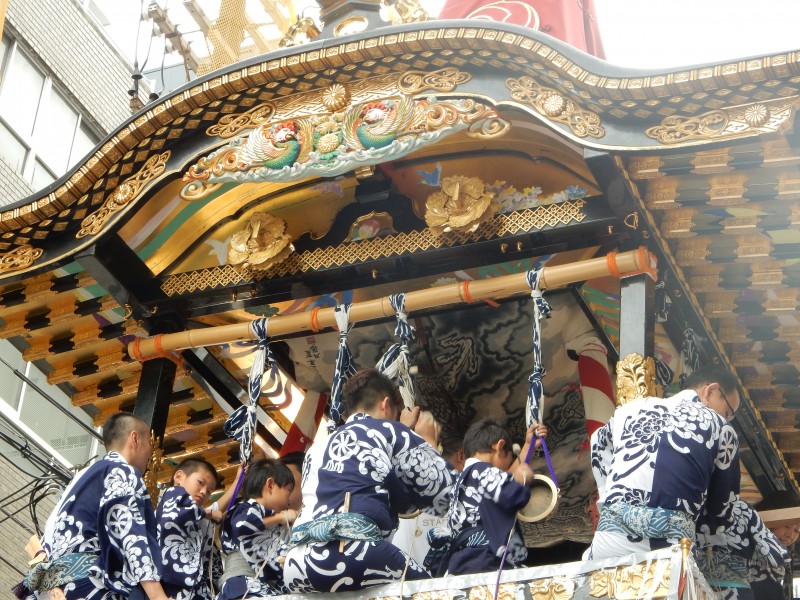
The Kikusui float is noted for its particularly lavish decoration, making it stand out during the grand parade
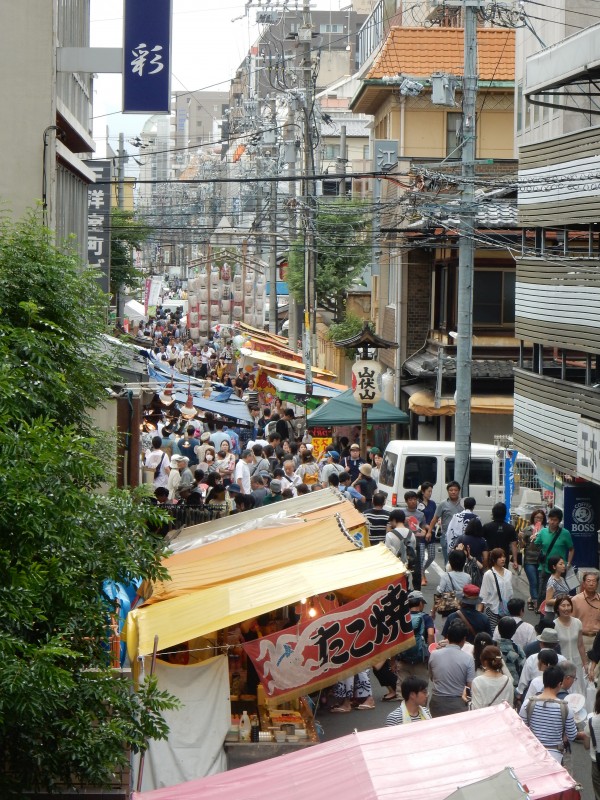
Some of the floats are in narrow packed streets, difficult to negotiate even for the many pedestrians. This is the view from the second floor of the Kikusui float, with an octopus dumpling stall in the foreground.

Leave a Reply